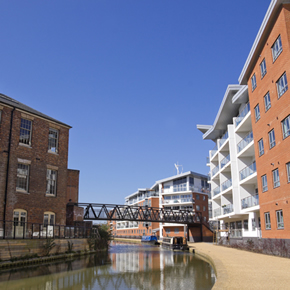
Residential acoustics explained
In contemporary Britain, the issue of noise within residential buildings is considered a health and safety issue, as well as an irritation. External noise sources – such as noisy neighbours and nearby traffic – are becoming increasingly problematic for occupants and, thus, detrimental to their health.
Hush Acoustics offers an explanation of residential acoustics, and information on what homeowners can do to reduce noise levels and soundproof their properties.
How does noise affect residential buildings?
According to Hush, there are three main sound sources that can affect residential buildings: airborne, impact and flanking transmission.
Airborne sound sources include music and TV, whilst impact sounds can include sudden noises, like footsteps. Flanking transmission is indirect sound transmission that bypasses a floor or wall system and travels through connected paths.
UK Building Regulations require that these noises are controlled to ensure comfortable living in residential buildings.
What can be done to reduce noise levels?
By specifying high quality acoustic products, which offer compliance with UK Building Regulations, the noise levels in residential buildings can be significantly reduced.
The most important regulations for residential builds are Approved Document E (England & Wales), Section 5 of the Scottish Building Standards (Scotland) and Approved Part G (Northern Ireland): these establish critical criteria for sound insulation performance for different types of residential accommodation, including multi-occupancy and single dwellings.
Approved Document E (England & Wales) has various requirements relating to sound, specifying that residential buildings should be protected against sound from other parts of the building and adjoining buildings; reverberation in common internal parts of buildings containing flats or single occupancy rooms.
These requirements are enforced by two methods: pre-completion testing (PCT) and Robust Details (RD). New build, refurbishment and change of use residential developments that are not built by means of Robust Details, require PCT to determine their compliancy with building regulations.
Robust Details are separating wall and floor constructions that are built to specific requirements set out by Robust Details Ltd. They do not require pre-completion testing.
Planning for effective soundproofing
Hush believes that early acoustic advice is crucial to achieve effective levels of soundproofing.
By attaining early design advice, architects, contractors and developers can be assured that their project will achieve compliance with UK Building Regulations and Standards, minimising the potential for failures.
This also reduces the need for costly and disruptive remedial measures later on.
The planning and design process requires designers to consider the noise exposure of the residential site, factoring in internal and external sources. Internal factors include building layout, acoustic screening, reverberation control and room acoustics, and protection from communal areas.
External factors include outside noises such as road traffic, railways, noisy neighbours and other local influences.
Hush Acoustics Ltd
Unit 2, Tinsley Industrial Estate
Shepcote Way
Sheffield
South Yorkshire
S9 1TH
Tel: 0114 551 8685
Fax: 0151 944 1146
Visit Supplier's page
Latest news

21st February 2025
ASSA ABLOY EMEIA: Save valuable time and money with a seamless switch to programmable digital keys
In 2025, access management can be a whole lot easier. By making access part of their digital processes, businesses can put time-consuming key management and the cost of changing the locks firmly behind them. Making this switch is a lot easier than many people think, as ASSA ABLOY explains here…
Posted in Access Control & Door Entry Systems, Architectural Ironmongery, Articles, Building Industry News, Building Products & Structures, Building Services, Doors, Facility Management & Building Services, Health & Safety, Information Technology, Innovations & New Products, Retrofit & Renovation, Security and Fire Protection
21st February 2025
Showersave supports industry leaders in addressing Part L and Part G regulations
Showersave has sponsored and participated in a recent Building Insights LIVE roundtable on ‘Water & Energy Saving Innovations in New Build Housing’.
Posted in Articles, Bathrooms & Toilets, Bathrooms, Bedrooms & Washrooms, Building Associations & Institutes, Building Industry Events, Building Industry News, Building Products & Structures, Building Regulations & Accreditations, Building Services, Exhibitions and Conferences, Interiors, Pipes & Fittings, Plumbing, Retrofit & Renovation, Sustainability & Energy Efficiency
21st February 2025
GEZE: The importance of Specifying High Quality Door Closers on Fire Doors
Andy Howland, Sales & Marketing Director at GEZE UK, discusses why specifying high quality door closers on fire doors is important…
Posted in Access Control & Door Entry Systems, Accessibility, Architectural Ironmongery, Articles, Building Industry News, Building Products & Structures, Building Regulations & Accreditations, Building Services, Doors, Facility Management & Building Services, Health & Safety, Posts, Restoration & Refurbishment, Retrofit & Renovation, Security and Fire Protection
21st February 2025
Insight Data achieves ISO9001 recertification with zero non-conformities
Leading industry data specialist, Insight Data, has successfully achieved the prestigious recertification for ISO9001 with zero non-conformities for the fourth consecutive year.
Posted in Articles, Building Industry News, Building Regulations & Accreditations, Building Services, Information Technology, Research & Materials Testing
 Sign up:
Sign up: